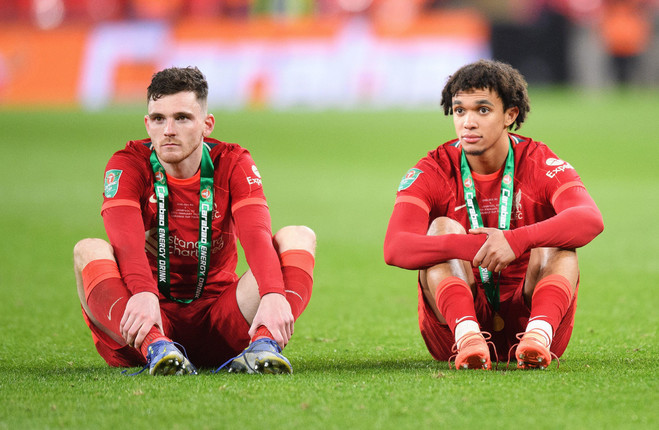FOOTBALL CONTINUES TO innovate and evolve and so it continues to relegate the left-behind to the precariat.
The latest to face obsolescence is the non-inverting full-back.
The inverted full-back has become this year’s fad in football’s fast fashion; inverting being the technical term for converting a full-back from a rook to a knight. Where once the full-back bucaneered up and down their wing, now they are cutting a right angle when their side are in possession to hover into the centre of the pitch.
The tactic that has flourished this season but it has been seeded for years. Like most ideas in the game nowadays, it is the word of Johan Cruyff made popular by Pep Guardiola, who has been asking a full-back to drift into midfield since his Bayern Munich days.
As with many of Guardiola’s best ideas, it was a proactive move driven by caution. Another player in the middle of the pitch means another passing option and more control, all the while making it more difficult for opponents to scythe through the centre on counter-attacks.
Guardiola has continued to do it this season. Having sacrificed Joao Cancelo in the name of squad harmony in January, he tried to engineer the tactic in reverse by asking Bernardo Silva fall into left back on the rare occasions City didn’t have the ball. This was wisely abandoned, and the right balance was struck when John Stones was picked at right-back and told to drift into midfield when City were in the possession.
Others have done it too, most obviously Arsenal, who tooled themselves for a title race by hiring Guardiola’s old assistant and then signing a couple of City’s discarded players. Oleksander Zinchenko excelled as an inverted left-back, helping Arsenal dominate games in a scintillating run of form that they ultimately spurned down the stretch.
But the moment this once-fringe idea entered the mainstream was, of course, when Trent Alexander-Arnold started doing it. English football has few greater obsessions than Alexander-Arnold, mainly because his qualities are unique and his flaws are familiar. England has never failed to produce a singular talent that it didn’t then try to beat into its benighted ways.
Liverpool’s physical and attendant systemic collapse this season exposed Alexander-Arnold’s defensive frailties, with Jurgen Klopp eventually realising that the era of beating Manchester City was over. And so he joined them, with Alexander-Arnold inverting into midfield in the 2-2 draw at home to Arsenal that came a week after a 4-1 battering at the Etihad.
Liverpool haven’t lost since and Alexander-Arnold has been a kind of Fantasy Football unicorn, with one goal and six assists since the pundits so obsessed with his performances began preaching to the inverted.
Such has been its success, Inverted Trent looks set to form the tactical basis for Liverpool’s evolution into next season.
But what about the other guy?
When Liverpool were at their best under Klopp, they reached a kind of zenith of attacking full-back play and were lethal down both wings, with Andy Robertson just as important as Alexander-Arnold. They waged a private competition on assist totals, and coach Pep Lijnders described his ideal vision of a Liverpool goal as one of the full-backs crossing to the other. Both have created a bit of history: three defenders in Premier League history have made more than 50 assists, and of that trio, only Leighton Baines is not currently in the Liverpool team.
Robertson is also one of the best signings in Liverpool history, costing £8 million and resolving a position in which Liverpool struggled to find a quality incumbent for about 30 years. But is there still a place for him in the brave new era of Inverted Trent?
With Alexander-Arnold stepping into central areas, Liverpool form a back three out of possession, with Ibrahima Konate to the right, Virgil van Dijk in the centre, and Robertson to the left, which curbs Robertson’s attacking opportunities.
Prior to Inverted Trent, Robertson averaged one assist every four games for this season, but has just one in the nine games since. He has averaged 2.44 crosses per game since the Arsenal game, having made a 3.16 per game in the games prior to that this season.
Robertson is now being asked to play as a left-sided centre-back rather than a left-back, for which his relative lack of height and physicality will be targeted. The trend elsewhere is not encouraging for him, where inverting full-backs have been complemented with another centre-back. Ben White plays at right-back for Arsenal, and Nathan Ake has excelled at left-back for Man City.
Alexander-Arnold and Robertson are one of the enduring duos of the Premier League era, but will the reinvention of one accelerate the phasing out of the other?


